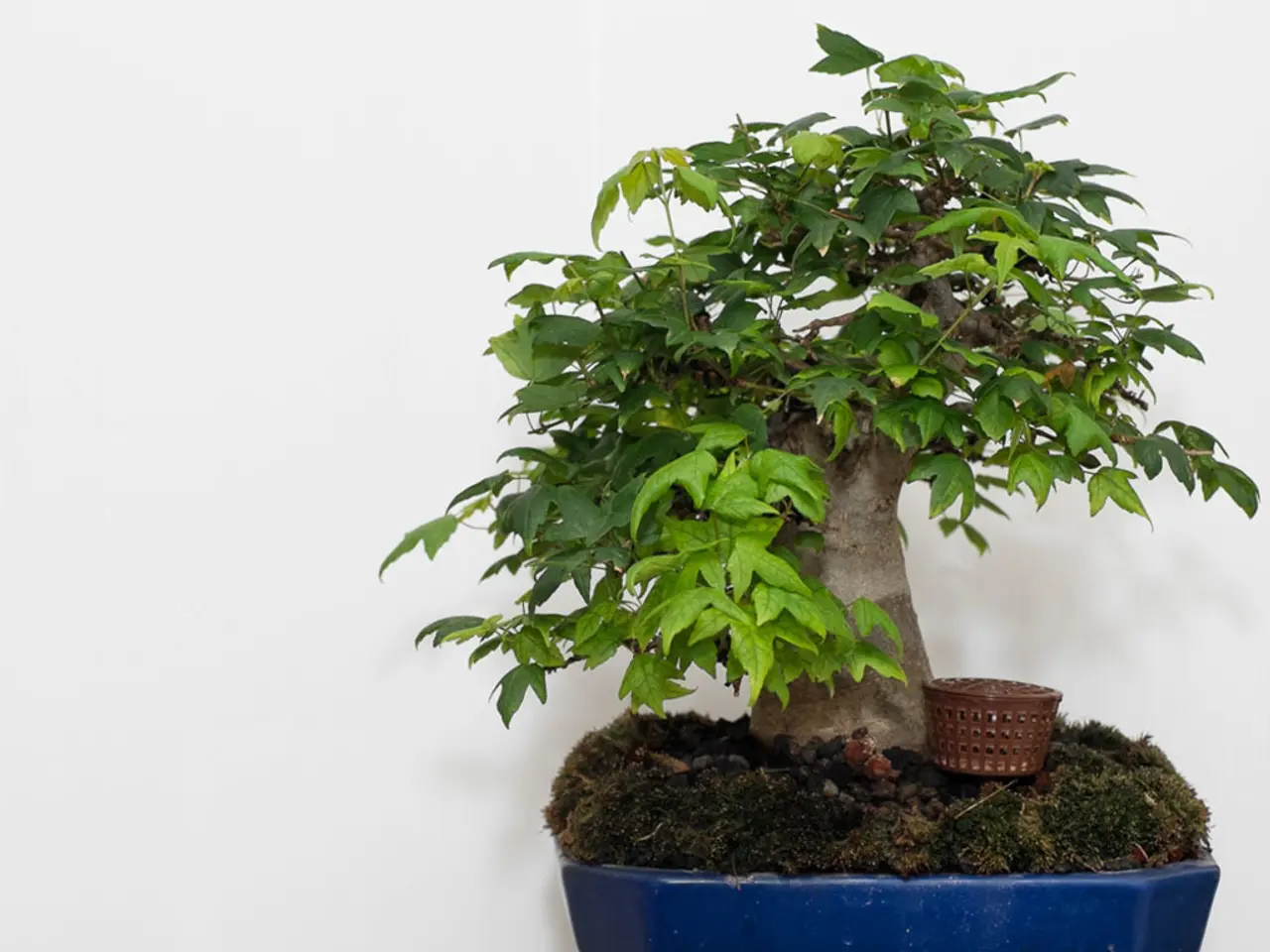Techniques for Bonsai Grafting: Merging Plant Species and Developing Distinct Characteristics
In the world of Bonsai, the ancient art of cultivating miniature trees, the limits of possibility are being pushed to new heights. With breathtaking creations that challenge perceptions and inspire imagination, Bonsai enthusiasts are treated to a new wave of experimental designs.
To achieve success in Bonsai grafting, it's crucial to select compatible species, maintain ideal humidity and temperature, monitor for pests and diseases, and provide adequate aftercare. Various grafting techniques are used, including inlay grafting, side grafting, whip and tongue grafting, and bud grafting.
One can even graft a deciduous species onto an evergreen rootstock, but compatibility and hardiness factors must be carefully considered. The recovery time for a grafted Bonsai varies depending on these factors, and can take anywhere from 6-24 months.
Advanced techniques used in Bonsai grafting to create unique and intricate designs include approach grafting, thread grafting, and scion grafting. Approach grafting involves joining two branches or trunks by bringing them close and allowing them to fuse, often used to create complex branch structures or add new features without removing existing parts. Thread grafting is a delicate method suitable for species that graft to themselves easily, enabling precise connections at smaller scales to add intricate branch details. Scion grafting is the insertion of a scion (a shoot or twig) onto a rootstock to propagate specific varieties, allowing for the creation of multi-varietal Bonsai with unique leaf colors or shapes.
Mastering Bonsai grafting requires understanding common pitfalls such as incompatibility, poor cambium layer alignment, and inadequate aftercare to avoid graft failure. It is also possible to graft multiple species onto a single rootstock, but requires careful species selection, precise grafting techniques, and meticulous post-grafting care.
Innovative Bonsai artists are pushing boundaries with avant-garde designs that defy traditional conventions, experimenting with unconventional species combinations and innovative techniques. By merging disparate species, practitioners can create visually stunning forms that rival the most exquisite works of art.
Advanced grafting in Bonsai is accompanied by meticulous techniques like using fine grafting knives, applying tape carefully to secure grafts, and timing cuts and unions for optimal healing and growth. These techniques are often combined with pruning and wiring to refine the tree’s development and artistic shape.
Some Bonsai masters also experiment with grafting unusual plants or combining species to produce entirely novel forms and aesthetics, expanding the creative possibilities of Bonsai artistry beyond traditional approaches. The ideal temperature for grafting Bonsai trees is a range of 65°F to 75°F (18°C to 24°C).
In conclusion, these advanced grafting methods contribute significantly to the creation of intricate, stable, and visually striking Bonsai designs that showcase both horticultural skill and artistic vision. The results are truly sublime, as this ancient art form continues to evolve and push the boundaries of what is possible.
In the realm of Bonsai, not limited to only miniature trees, innovative artists blend traditional techniques with avant-garde designs, experimenting with home-and-garden plants like deciduous and evergreen species for unique lifestyle creations. To craft such masterpieces, they employ intricate scion grafting, approach grafting, and thread grafting, working meticulously with fine grafting knives and precise cuts to ensure optimal healing and growth at ideal temperatures of 65°F to 75°F (18°C to 24°C).





